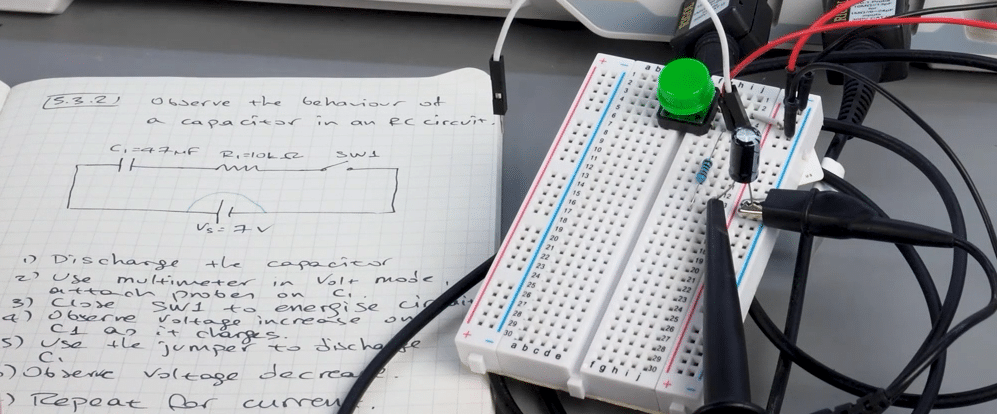Electricity is a form of energy resulting from the presence and flow of electric charge. This electric charge can be produced by charged particles such as electrons or protons. Electricity can occur in various forms including static electricity, current electricity, and electromagnetic waves.
In our work in electronics, we work with electricity in the form of electrical current, which refers to the flow of electric charge through a conductor. This flow is driven by a potential difference, or voltage, across the conductor, which creates an electric field that pushes the electrons, through the material. We use the unit Amperes to count the strength of the electrical current.
Just a note here: While we tend to think of electricity as the result of moving electrons through a wire, broadly speaking, you can make electricity by moving other charged particles, such as protons. While electrons have a negative charge, protons are positively charged. The reason that you will not find proton-based electricity outside research labs is that protons exist trapped inside atoms. Unlike electrons, protons can't move freely, and so they do not contribute to the electric current like electrons do.
In certain conditions, such as in plasma or ionized gases, both protons (positive ions) and electrons (negative ions) can move and contribute to electrical phenomena. However, this is not typical in solid conductors used in most electrical systems. Another example of protons used in an electrical system is in fuel cells, where protons do move through a proton exchange membrane, but this is a specific application and not representative of general electrical conduction.
Let's get back to "normal" electronics.

